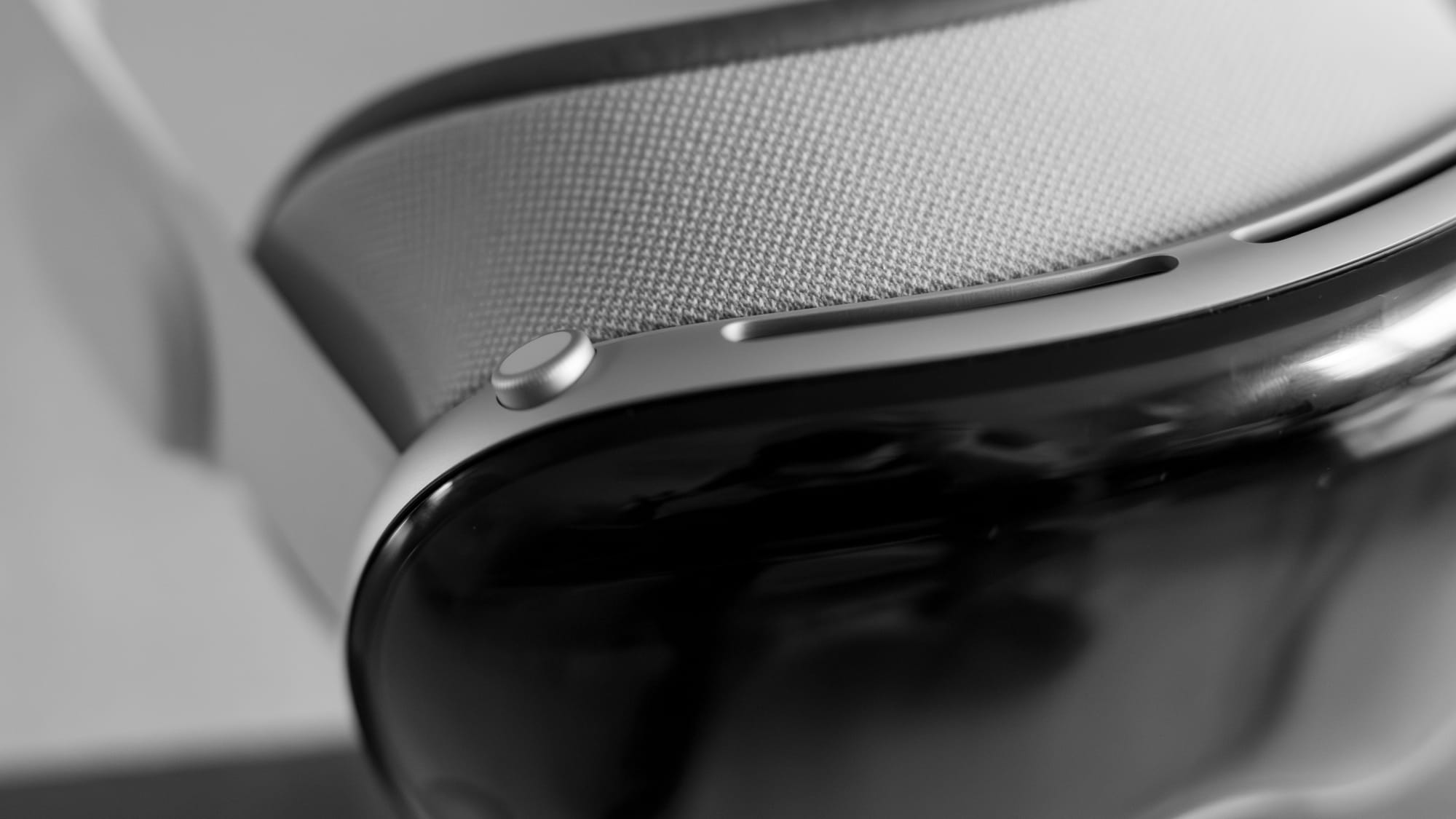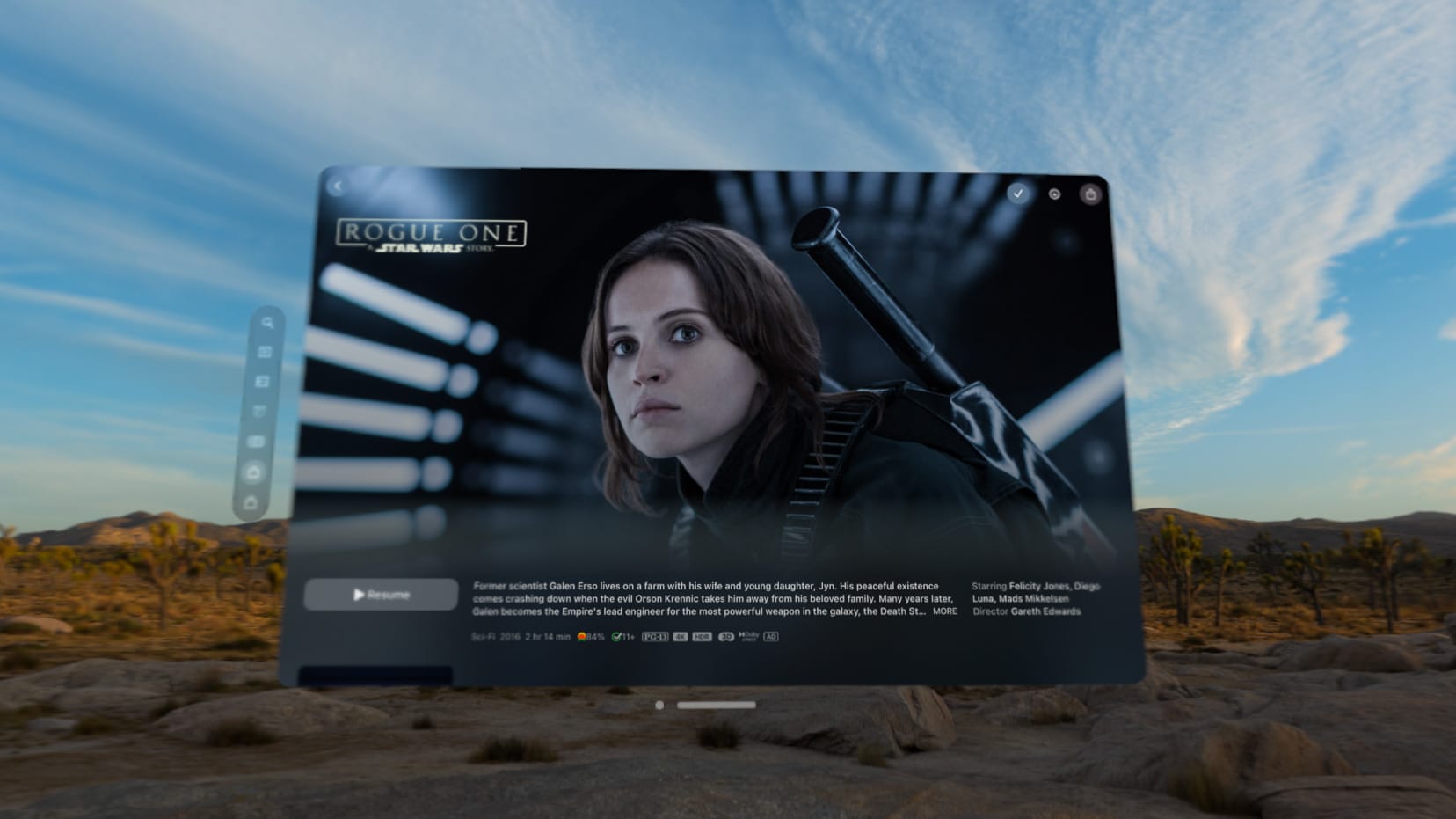The “heaviness” of visionOS, and my big fear for the Vision Pro
Before we get going, I'll mention to those who aren't following along that this is one in a long series of posts about using the Vision Pro. This post does not contain all of my thoughts on the product, and I've included some links at the bottom to add some color to my opinions if you want more.
The past week has been a trip, both literally and figuratively. Last Monday I left for a work trip down to sunny Phoenix, Arizona. I brought my Vision Pro with me, thinking it would be a great chance to cash in on the benefit of having big-ass computer displays and movies in my hotel room. I returned home Thursday, and planned to write this post immediately, but got slowed down because (drum roll please) I got Covid 😑.
I started to feel ill Thursday night and I woke up Friday feeling more sick than I think I’ve ever felt in my life. I bounced back a little on Saturday, but regressed on Sunday where it took every ounce of willpower I had to even get out of bed. Today is Monday and I’m feeling as good as I have since symptoms kicked in, but I’m still not great. Covid absolutely sucks.
But Silver Linings Birchler saw this as another chance to see how useful the Vision Pro could be when I was basically bedridden for a few days. So today’s post is a twofer: how did the Vision Pro work on a business trip and how did it work when I was sick and didn’t want to get out of bed?
Vision Pro on the road
I’ll get it out of the way right up front: the Vision Pro absolutely delivers on the promise of letting you have the same experience wherever you are in the world. My workspace was effectively infinite, and I could engage one of the digital environments to make it feel like I wasn’t in a hotel room anymore.
That said, I found myself using my MacBook Pro and iPhone in the hotel room more than I expected. My work likes to keep us very busy on these sorts of trips, and by the time I rolled into the hotel room at night, I was pretty burnt out. I still wanted to check Slack and email, pop in on social media, and watch some TV & YouTube to unwind, and while the Vision Pro was pretty great for watching Foundation, I found myself opening up my Mac to do everything else more often.
But why? Wasn't the promise of VR ("spatial computing" if you'd prefer) that we'd be able to have massive workspaces with us everywhere? I'd like to explore this idea more over the coming months, but I find using the Vision Pro to be a "heavier" experience than using an iPhone, iPad, or Mac. That's not to say that's a bad thing all the time, but I don't find myself wanting to casually use the Vision Pro. The Vision Pro can be great when I'm fully engaged in what I'm doing, but it's not what I'm gravitating towards when I'm chilling or just don't have it in me to get "in the zone".
So yes, the Vision Pro gives you the same experience in your home office or your hotel room, but the question for me became whether that was even the experience I wanted in that situation. And yes, watching Foundation on the one night I had energy for something that heavy was very nice.
Vision Pro when Covid is beating the shit out of you
"Jack me into the matrix," is what I told my wife at some point when Covid really started to mess me up. What a great chance to use the Vision Pro when I was so god damned exhausted that I couldn't move, right? I could don the headset and move my videos and whatnot wherever I wanted and be comfortable!
Well, yes and no. Yes, I could have used it to do these things, but I used my Vision Pro for less than an hour over the last 4 days. The reasons this time were twofold.
First, just like when I was tired and didn't have as much energy in the hotel room, I wasn't looking for an intense computing experience, I wanted something more "ambient" and with the least friction possible. Second, when I'm sick, I absolutely do not want to strap a heavy headset to my face. It's simply uncomfortable, and not to state the obvious, but sometimes when you're sick you just kinda fall asleep randomly, and I'd rather not do that with a $3,500 headset that could break if it slips off my face and falls.
What the Vision Pro is good for right now
With the coward's "for me" disclaimer, I think the Vision Pro currently works best when I have plenty of energy and and am prepared to be fully engaged in what I want to accomplish while in the headset. When I'm having a normal work day or when I want to sit down and watch a movie on my own, it can work great and the experiences you can get are sometimes sublime. However, when I'm not as intentional with my computing needs or if I'm just plum tired, I find other computing platforms to be preferable.
What's interesting to me is that this is the first time I've found a new Apple platform to be more intense to use than what came before. I've got my complaints with iPadOS, but one thing that platform does well is make doing simple tasks very easy. When I was sick in the past, my iPad became my best friend. When I was sick this time, my iPhone (aka the greatest computing form factor of all time) was my hero. This isn't to say the Vision Pro is too complicated or has too many features, if anything the opposite is true, it's just that doing those things requires managing a mental load that I didn't appreciate until my capacities were reduced.
Once again, I'll need to think about this more in the coming months, but today two reasons for this seem likely to me.
First is the sheer weight of the device. It's heavy, it feels fragile, and I need to figure out how I'm going to account for the battery when I'm using it. None of this is a huge deal much of the time (although we'll look back on this version in a few years and laugh at how primitive it was in comparison), but it's a hurdle when your faculties are reduced. Something something accessibility is relevant to everyone at different times.
Second is the eye-based user interface. The eye tracking is remarkable most of the time, but I do find it pretty intense to use all the time. Humans have been interacting with intricate objects with our hands forever, so a mouse or touchscreen come pretty natural to us and lean into input methods that are already adept and have been tuned for fine grained interactions. Maybe there's research that shows our eyes are just as adept and I'm crazy, but it feels much more intentional for me to have to stare directly, and thoughtfully at everything I want to interact with in visionOS.
My big fear
While there is a core group of VR enthusiasts out there, by far the most common VR experience I've seen out there is:
- I just bought this headset and wow, it's amazing!
- It's been a few weeks and I've run out of things to do.
- It's been a few months and my headset's been collecting dust in a closet for a while now.
I asked about this on Mastodon back in December and 72% of people who owned a headset hadn't used it in over a month, and my replies strongly indicated most of them hadn't used theirs in over a year. And these are nerds! You'd think this group would be more into cutting edge tech!
As I sit here about 3 weeks into owning a Vision Pro myself, I am a bit worried that I'm not using this thing at every opportunity I can. Now that the novelty of seeing Things 3 and Safari in 3D space has worn off, I'm not finding the product so fundamentally compelling that I'm making up excuses to use it every moment I can. I think it's an interesting product to own and it might turn into something huge, but I'd be lying if I said I was totally confident in it. As Nilay Patel said in his review, "it’s magic until it’s not."
I'm worried that outside of watching movies (alone), a headset won't be my go-to device for doing almost anything else. I'm worried that the Vision Pro will become just another VR headset that most people toss in a drawer one day and forget about. Maybe the Vision Pro is just the best version of a product that's fundamentally not that compelling to most people…
Let's not get too doom-and-gloom, huh?
Dang, this post took a pretty negative turn! I don't want this to come across as a sweeping damnation of the Vision Pro. I fully believe that we're in an era of more computers…
With very few exceptions, new computers don't replace anything, they just get added to the pile of computers in our lives already.
…and the fact one device can't do everything in every situation isn't the mark of death. Although I will say that's one thing when it's a $500 iPad, and it's tougher to swallow when it's a near-$4,000 computer.
I have hopes that we'll see visionOS 2 at WWDC in a few months and it will already show some great strides towards enabling those unique experiences that make the weight of putting on the chunky headset more compelling in more situations.
I'd be curious to hear if other Vision Pro users feel similar to me, or if all of this rings hollow to them. Maybe they're popping this thing on and off without a care in the world. Maybe they find the eye tracking to be even more effortless than using a touch screen! The fun part about having a computer like this so early in its lifecycle is that you get to figure all this stuff out. I'm not here lecturing anyone on the research that's been done on this, I'm just sharing my experience and lapping up what others have to say as well.
And here are those promised bonus links if you want to read more. Cheers!






